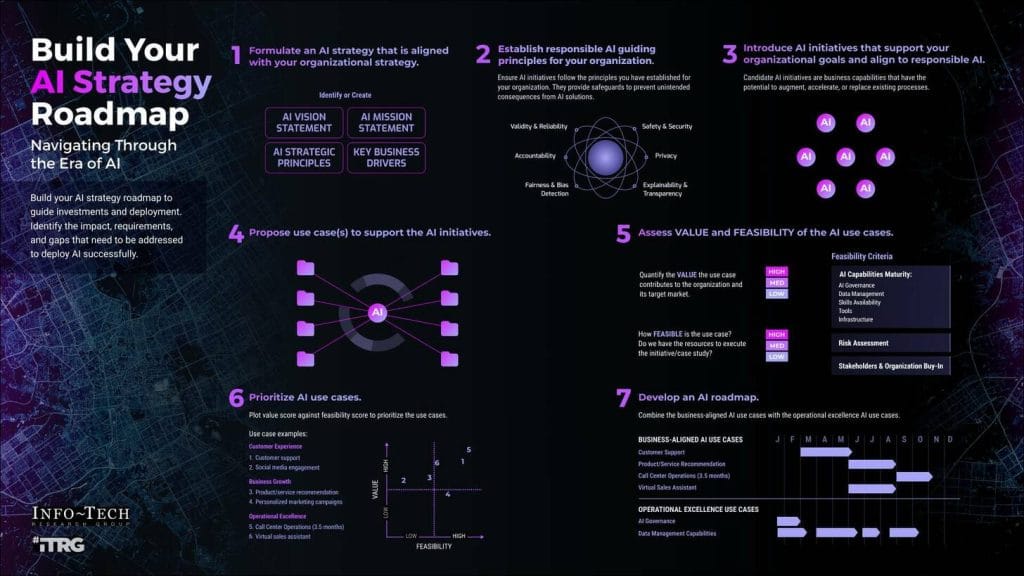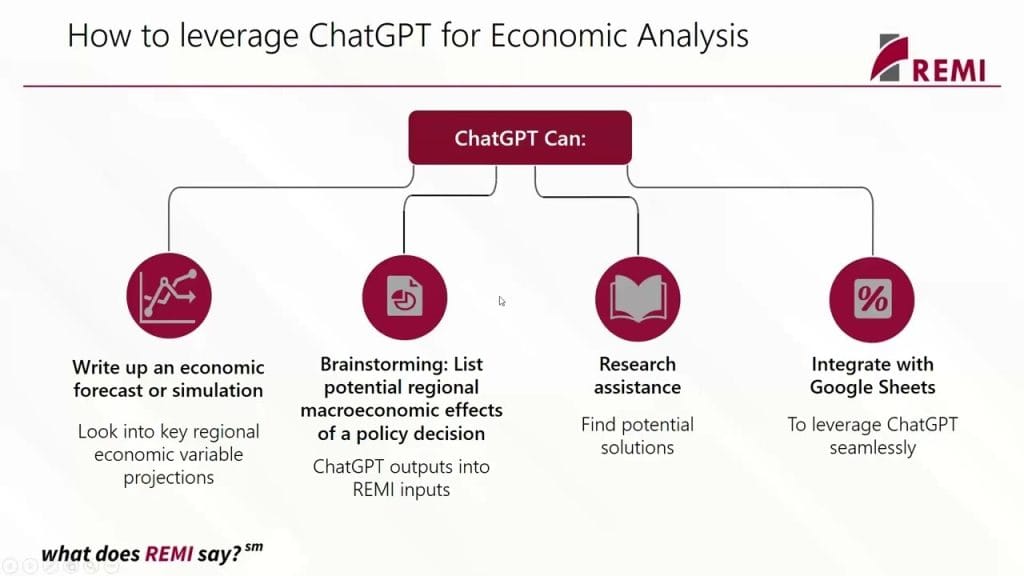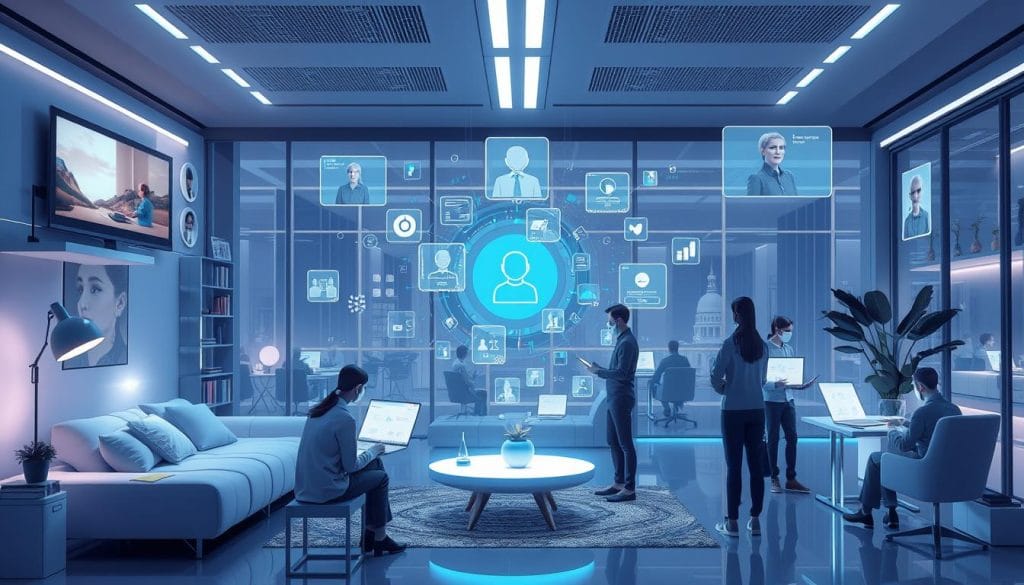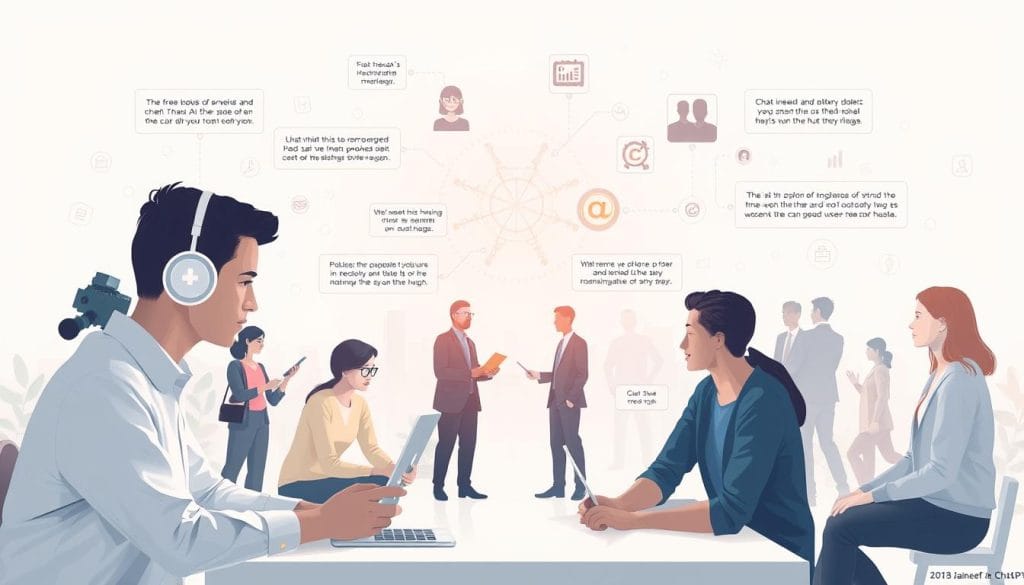As artificial intelligence continues to reshape our digital landscape, ChatGPT 5 stands at the forefront of this transformation. This latest iteration from OpenAI represents not just an incremental improvement, but a significant leap in AI capabilities that could redefine how we interact with technology. Understanding where ChatGPT 5 is headed, what goals drive its development, and how to assess its true value has become essential for anyone navigating our increasingly AI-integrated world.
ChatGPT 5: The Current State of Play
ChatGPT 5’s unified system automatically routes between fast and thinking modes based on query complexity
Before we look forward, let’s establish where ChatGPT 5 currently stands. The model represents OpenAI’s most advanced system to date, featuring a unified architecture that automatically routes between a fast, efficient model for straightforward queries and a deeper reasoning model for complex problems. This intelligent routing happens through a real-time decision engine that analyzes conversation type, complexity, and user intent.
The current iteration excels in several key areas: significantly reduced hallucinations, improved instruction following, enhanced coding capabilities (particularly in front-end development), more nuanced creative writing, and better health-related responses. The system also demonstrates marked improvements in multimodal understanding, allowing it to reason more effectively across text, images, and other inputs.
Perhaps most importantly, ChatGPT 5 has begun to address the “sycophancy problem” that plagued earlier versions, becoming less effusively agreeable and more thoughtful in its responses. This shift toward more balanced, considered interactions represents an important step in the model’s evolution toward more natural, helpful AI assistance.
The Roadmap for ChatGPT 5: Where Is It Headed?
OpenAI’s vision for ChatGPT 5 extends far beyond its current capabilities. The development trajectory appears focused on several key areas that will likely define the next generation of AI assistants.
Enhanced Reasoning and Problem-Solving
The “thinking” mode in ChatGPT 5 represents just the beginning of OpenAI’s push toward more sophisticated reasoning. Future iterations will likely feature expanded capabilities for multi-step problem solving, causal reasoning, and handling ambiguity. The goal is to move beyond pattern recognition toward something closer to genuine understanding—a system that can truly think through complex problems rather than simply predicting the next most likely response.
Expanded Multimodal Capabilities
While ChatGPT 5 already shows improved performance in understanding images and other non-text inputs, future versions will likely integrate even more seamlessly with OpenAI’s other tools like DALL·E and Sora. This could enable truly multimodal conversations where users can seamlessly shift between text, images, audio, and video—with the AI maintaining context and coherence throughout.
Specialized Domain Expertise
OpenAI has already highlighted improvements in areas like health, coding, and creative writing. The next frontier appears to be developing deeper expertise in specialized domains—from legal analysis to scientific research to financial planning. Rather than being a generalist with surface-level knowledge across many fields, ChatGPT 5 may evolve toward offering genuinely expert-level assistance in specific domains.
Stay Ahead of AI Developments
Get exclusive insights on ChatGPT 5’s evolution and practical implementation strategies delivered straight to your inbox.
Subscribe to AI Future UpdatesStrategic Goals Driving ChatGPT 5’s Development

Ethical AI Alignment
A primary goal for ChatGPT 5 appears to be achieving better alignment with human values and intentions. OpenAI has invested heavily in reducing harmful outputs, implementing more nuanced safety training through “safe completions” rather than simple refusals, and improving the model’s ability to navigate ethically complex scenarios. This focus on alignment represents not just a response to criticism but a fundamental recognition that AI systems must be designed to work in harmony with human values.
Reducing Cognitive Biases
OpenAI has acknowledged the challenges of biases in AI systems and appears committed to addressing them in ChatGPT 5’s development. This includes efforts to reduce sycophancy (excessive agreeableness), improve factual accuracy, and ensure the model doesn’t unfairly favor certain perspectives or information sources. The goal is to create a more balanced, objective AI assistant that can present multiple viewpoints and acknowledge uncertainty when appropriate.
Democratizing AI Access
Despite introducing tiered pricing models, OpenAI maintains a commitment to making ChatGPT 5’s capabilities broadly accessible. This includes maintaining a robust free tier, offering educational access, and developing specialized versions for different user needs. The strategic goal appears to be balancing commercial viability with the mission of ensuring AI benefits are widely distributed.
Building a Platform Ecosystem
ChatGPT 5 represents a step toward creating a comprehensive AI platform rather than just a standalone product. The integration of tools like Codex, the introduction of agents, and the ability to connect with other applications all point toward OpenAI’s ambition to make ChatGPT 5 the foundation of a broader AI ecosystem. This platform approach could eventually position ChatGPT as an operating system for AI-powered applications.
Assessing ChatGPT 5’s Impact Across Industries

Healthcare Transformation
ChatGPT 5’s improved performance on health-related queries positions it to become a valuable tool for both patients and healthcare providers. For patients, it could serve as an informed first point of contact, helping them understand medical information and determine when to seek professional care. For providers, it could assist with documentation, research, and even preliminary diagnosis—though OpenAI is careful to position it as a partner rather than a replacement for medical professionals.
Education Revolution
The introduction of Study mode in ChatGPT 5 signals OpenAI’s serious interest in the educational sector. Rather than simply providing answers, the system now attempts to guide learning through Socratic questioning and step-by-step assistance. This approach could transform how students learn complex subjects, offering personalized tutoring at scale. However, educational institutions will need to develop new frameworks for incorporating these tools while maintaining academic integrity.
Business Process Automation
For businesses, ChatGPT 5’s improved coding, reasoning, and multimodal capabilities open new possibilities for automation. The system can now handle more complex workflows, from generating sophisticated front-end designs to analyzing documents and synthesizing information. As these capabilities mature, we may see ChatGPT 5 evolve from a tool that augments human work to one that can independently handle entire business processes.
Implement AI in Your Industry
Download our comprehensive guide to implementing ChatGPT 5 in your specific industry with practical use cases and integration strategies.
Get the Implementation GuideCurrent Limitations and Future Challenges

Strengths
- Unified system with automatic routing between models
- Significantly reduced hallucinations and factual errors
- Enhanced reasoning capabilities through “thinking” mode
- Improved multimodal understanding across text and images
- Better performance in specialized domains like coding and health
Limitations
- Inconsistent product experience across different features
- Limited self-awareness about its own capabilities
- Inadequate documentation and user guidance
- Persistent challenges with complex reasoning tasks
- Ethical concerns around biological and chemical knowledge
The Product Integration Challenge
As noted by critics, ChatGPT 5 still struggles with product coherence. Features like agents, video generation, and specialized tools aren’t always well-integrated or clearly explained. This creates a fragmented user experience where capabilities are present but difficult to access or understand. Future versions will need to address this fundamental product design challenge to realize the full potential of the underlying technology.
The Ethical Balancing Act
OpenAI continues to navigate complex ethical territory with ChatGPT 5. The model now includes comprehensive safeguards for biological risk, reflecting concerns about potential misuse. However, these safeguards must be balanced against legitimate uses in research and education. Finding the right balance between safety and utility remains an ongoing challenge that will shape ChatGPT 5’s evolution.
Economic and Creative Implications

Job Transformation vs. Displacement
ChatGPT 5’s enhanced capabilities in coding, writing, and problem-solving naturally raise questions about job displacement. However, current evidence suggests that the impact may be more transformative than displacing. The model excels at augmenting human capabilities rather than fully replacing them—helping programmers write better code faster, assisting writers with research and editing, and enabling professionals to focus on higher-level tasks while automating routine work.
New Creative Possibilities
For creative professionals, ChatGPT 5 opens new possibilities through its improved writing capabilities and integration with other creative tools. Writers can use it to explore different narrative approaches, designers can rapidly prototype ideas, and multimedia creators can leverage its ability to work across different formats. Rather than replacing human creativity, ChatGPT 5 appears positioned to become a collaborative partner that expands creative possibilities.
Economic Value Creation
The economic impact of ChatGPT 5 will likely extend beyond simple productivity gains. By making specialized expertise more accessible, it could democratize access to high-quality services in areas like legal advice, financial planning, and technical support. This could create new markets and business models built around AI-augmented professional services, potentially generating significant economic value while making these services available to previously underserved populations.
“ChatGPT 5 represents not just a technological advancement but an economic inflection point—where AI begins to generate more value than it displaces by augmenting human capabilities rather than simply automating existing tasks.”
ChatGPT 5 vs. Previous Iterations: Measuring Progress

| Capability | ChatGPT-3 | ChatGPT-4 | ChatGPT-4o | ChatGPT 5 |
| Reasoning Depth | Basic | Moderate | Good | Advanced with dedicated thinking mode |
| Factual Accuracy | Low | Moderate | Good | High (45% fewer errors than 4o) |
| Coding Performance | Basic | Good | Very Good | Excellent (74.9% on SWE-Bench) |
| Multimodal Understanding | None | Basic | Good | Advanced (84.2% on MMMU) |
| Context Window | 2K tokens | 8K-32K tokens | 128K tokens | 196K tokens |
The progression from earlier ChatGPT versions to ChatGPT 5 shows a clear trajectory of improvement across key metrics. While each iteration has brought incremental advances, ChatGPT 5 represents a more significant leap—particularly in reasoning capabilities, factual accuracy, and multimodal understanding. The introduction of automatic routing between fast and thinking modes also marks an important architectural shift that could define the model’s future development.
Ethical Considerations and Responsible Development

The Safe Completions Paradigm
OpenAI’s shift from simple refusal-based safety to the “safe completions” paradigm represents an important ethical evolution. Rather than simply refusing potentially problematic requests, ChatGPT 5 attempts to provide helpful information at an appropriate level of detail. This approach acknowledges the complexity of real-world information needs while still maintaining safety boundaries.
Biological and Chemical Safeguards
OpenAI has implemented comprehensive safeguards around biological and chemical knowledge in ChatGPT 5, reflecting concerns about potential misuse. These include threat modeling, training the model to provide safe completions, always-on classifiers and reasoning monitors, and clear enforcement pipelines. This precautionary approach demonstrates a recognition of the dual-use nature of advanced AI capabilities.
Transparency and User Control
ChatGPT 5 introduces more ways for users to customize and control their experience, including preset personalities and improved instruction following. This emphasis on user agency represents an important ethical principle—that AI systems should be transparent about their capabilities and limitations while giving users meaningful control over how they operate.
Key Ethical Principle: ChatGPT 5’s development appears guided by the principle that AI systems should augment human capabilities and choices rather than replacing human agency. This is reflected in features like Study mode, which coaches rather than simply answering, and the model’s improved ability to acknowledge uncertainty rather than providing false confidence.
Speculative Future: Where Could ChatGPT 5 Lead?

The AI Operating System
One possible future for ChatGPT 5 is evolution toward becoming an AI operating system—a platform that coordinates multiple specialized AI tools and connects them with applications and services. In this scenario, ChatGPT would serve as both an interface for users and a coordination layer for AI capabilities, potentially challenging traditional operating systems as the primary way people interact with technology.
Specialized Expert Systems
Another direction could be toward increasingly specialized versions of ChatGPT 5 tailored for specific domains. We might see dedicated models for healthcare, legal services, education, and other fields—each with deep expertise in its domain and specialized capabilities relevant to those contexts. These expert systems could transform professional services by making specialized knowledge more accessible and affordable.
Collaborative Intelligence
Perhaps the most intriguing possibility is the evolution of ChatGPT 5 toward truly collaborative intelligence—systems designed specifically to work with humans rather than for them. This would involve developing new interfaces and interaction patterns that leverage the complementary strengths of human and artificial intelligence, creating partnerships that are more powerful than either alone.
Will ChatGPT 5 lead to widespread job displacement?
Current evidence suggests ChatGPT 5 is more likely to transform jobs than eliminate them entirely. The technology excels at augmenting human capabilities rather than fully replacing them. Most professions involve complex social interactions, judgment, and creativity that remain challenging for AI. However, the nature of many jobs will likely change as routine aspects are automated, requiring workers to develop new skills focused on areas where humans still outperform AI.
How will ChatGPT 5 affect education and learning?
ChatGPT 5’s Study mode represents a shift toward using AI as a learning partner rather than just an answer provider. This could enable more personalized learning experiences and help address educational inequalities by providing high-quality tutoring at scale. However, educational institutions will need to develop new approaches to assessment and teaching that acknowledge the presence of these tools while still ensuring students develop critical thinking skills.
Could ChatGPT 5 eventually achieve artificial general intelligence (AGI)?
While ChatGPT 5 represents significant progress in AI capabilities, it remains fundamentally different from AGI as typically conceived. The system excels at pattern recognition and generation within its training distribution but lacks true understanding, autonomous goal-setting, and many other capabilities associated with general intelligence. OpenAI views ChatGPT as a step toward AGI rather than AGI itself, though the exact path from current systems to more general intelligence remains an open research question.
Practical Implications: Preparing for the ChatGPT 5 Era

Skills for the AI Age
As ChatGPT 5 and similar technologies become more capable, the skills most valuable in the workforce will likely shift. Technical skills like prompt engineering and AI integration will grow in importance, but so will uniquely human capabilities like creative problem-solving, ethical judgment, and interpersonal communication. Preparing for this future means developing a balanced skill set that leverages AI capabilities while cultivating areas where humans still excel.
Organizational Adaptation
For organizations, ChatGPT 5 presents both opportunities and challenges. Integrating these capabilities effectively requires rethinking workflows, training employees, and developing clear policies around AI use. Organizations that view ChatGPT 5 as a collaborative tool rather than just a cost-cutting measure will likely see the greatest benefits—finding ways to combine human and artificial intelligence to create new value rather than simply automating existing processes.
Policy and Governance
The rapid advancement of systems like ChatGPT 5 raises important questions about governance and regulation. How should these technologies be overseen? What standards should guide their development and deployment? As these systems become more capable and widespread, developing thoughtful governance frameworks that balance innovation with safety and ethical considerations will become increasingly important.
Join the AI Evolution Community
Connect with experts and enthusiasts exploring the future of ChatGPT 5 and other AI technologies. Share insights, ask questions, and stay at the forefront of AI evolution.
Join Our CommunityConclusion: Assessing ChatGPT 5’s True Worth

ChatGPT 5 represents a significant milestone in AI development—not just for its technical capabilities but for what it reveals about the evolving relationship between humans and artificial intelligence. Its worth cannot be measured solely in benchmark scores or feature lists but must be evaluated in terms of how it enhances human capabilities and addresses meaningful problems.
The true value of ChatGPT 5 may lie not in what it can do independently but in how it enables new forms of human-AI collaboration. By handling routine tasks, providing information access, and augmenting human creativity, it creates space for people to focus on uniquely human contributions—critical thinking, ethical judgment, emotional intelligence, and creative vision.
As we look toward the future of ChatGPT 5 and similar technologies, the most important question may not be how intelligent these systems can become, but how wisely we choose to develop and deploy them. The goal should not be artificial general intelligence for its own sake, but beneficial intelligence that enhances human flourishing and addresses our most pressing challenges.
In this light, ChatGPT 5’s greatest worth may be as a catalyst—not just for technological advancement but for deeper reflection on what kind of future we want to create and how artificial intelligence can help us build it.
